
Friday August 24, 2007
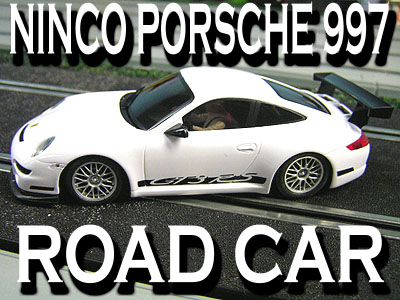
Arriving from NINCO is a model that not many enthusiasts have taken time to notice. Perhaps it is because this version of the Porsche 997 is in street clothes. However, do not let this innocent look fool you. Although it might seem timid at first glance, I soon discovered there is a lot more about this slot car than meets the eye.
If one thing is certain in our hobby, it is that there is no shortage of Porsche. From vintage classics to brand new, we have a full field. This model joins the line up offering a little more to it than just the famous curves many Porsche fans adore.
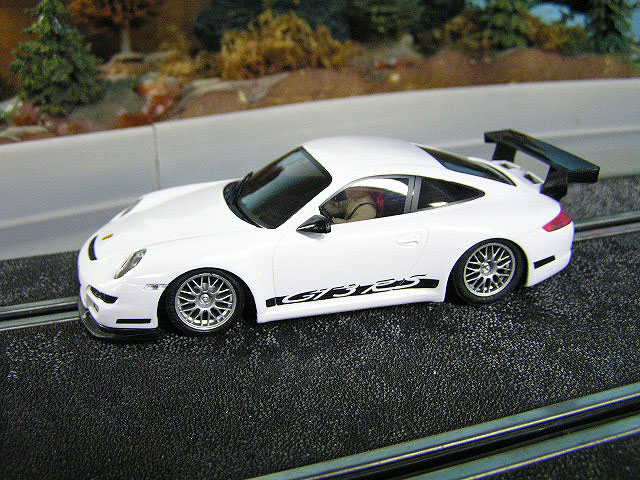
Looking at the car and comparing it to prototype photos reveals that NINCO has done a fair job in capturing it in our scale. It does appear that the rear of the car is slightly lower than it should be and that the rear wheels appear tucked in a shade to much, not filling out the fender area. In any event, it is not enough to my eyes to take away from an otherwise excellent effort. However, I mention it as there are many enthusiasts who will not like the look and stance they have brought.
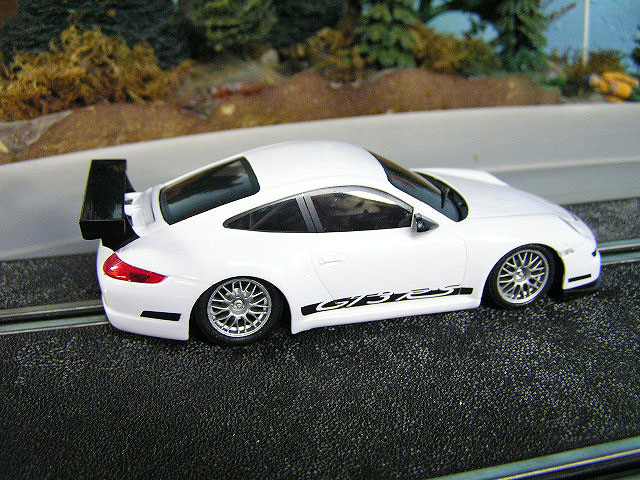
Paint and clear coat are near perfect with no signs of runs or fades. I found a little flash areas around the tail light lenses, but nothing very offensive. Small details are still here such as the front grill mesh and although this is the road car version, we see visible roll bar detail and even a fire bottle in the interior. Our driver is present although he has no helmet to protect him. I liked the tinted glass effect and overall the model is appealing to me for what it is: A street car.
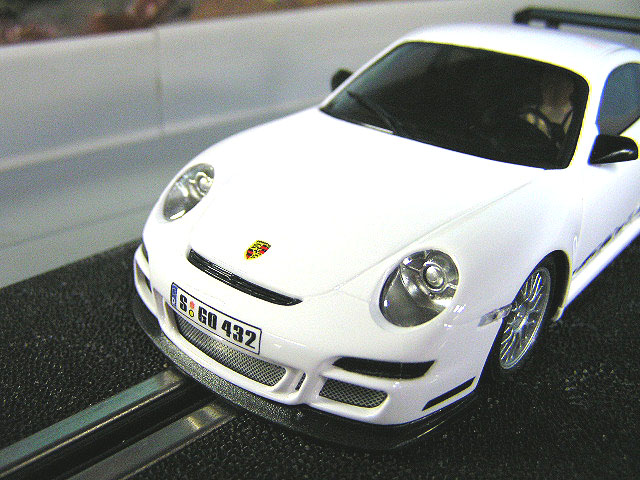
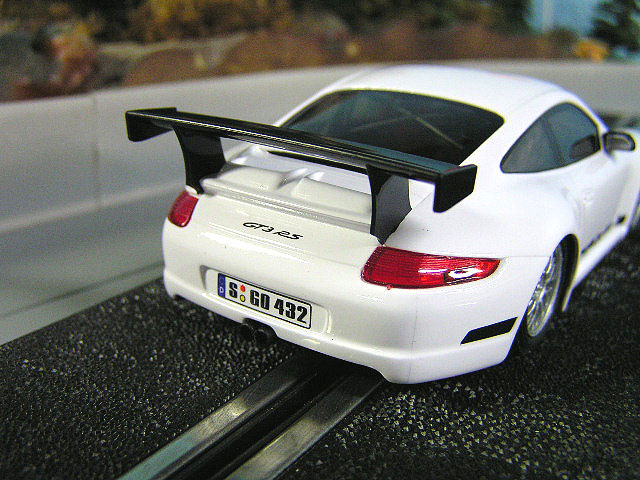
Wheels & tires are standard NINCO fare and are very round and true. There is visible brake rotor detail that adds a more finished look to the model. I like the rubber compound on most NINCO models and such is the case here. No after-market tires will find a home here. There are some available of course, so check with your favorite tire maker in the event you need new shoes for your Porsche.
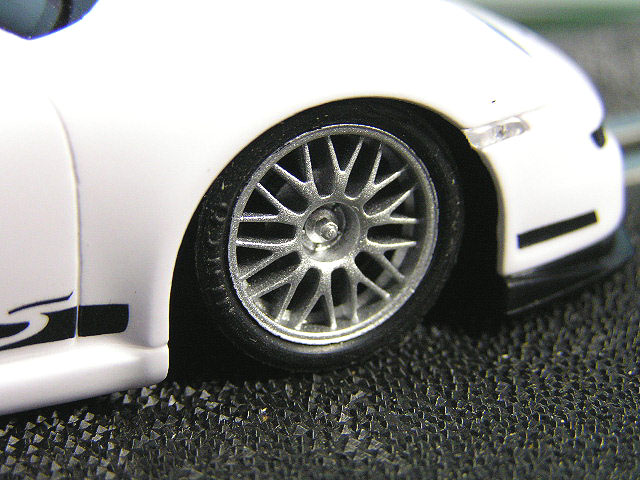
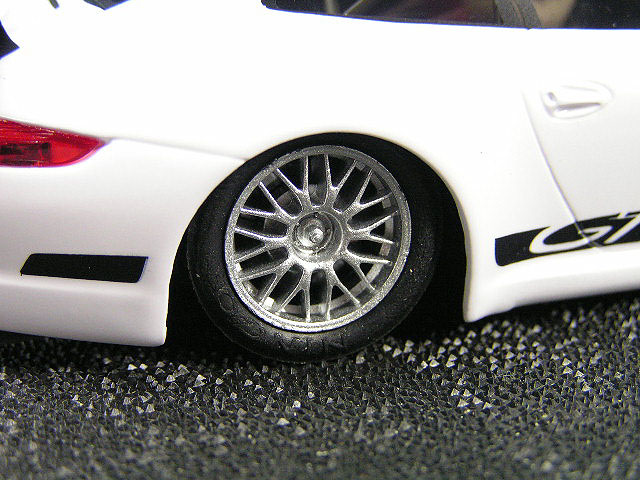
Turning the model over gave me the first indication that I had a real road rocket on my hands. A basic chassis is used which I am very happy to see. Although some like the Pro-Shock suspensions, I can live without them. On the larger RAID and Rally trucks they are a nice feature, but on my race cars I like them with just a solid chassis.
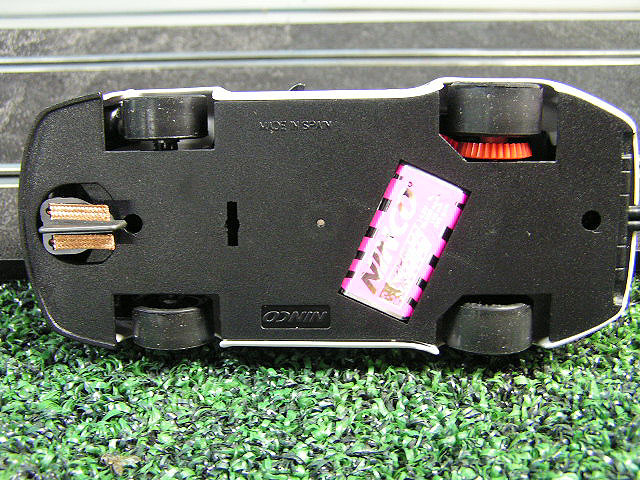
We also see the now standard NC-5 Speeder motor in the angle-winder configuration along with the standard button magnet in the mid position of the car. Just by looking this layout I expected very good performance form this Porsche and it was finally time for our out of the box test.
Out Of The Box
The first few laps confirmed by hopes. This model simply screams around our road course. Our Pyramid adjustable power supply was set right at 12 volts and I used PARMA 25 ohm Econo controllers for these first series of tests. I had this model easily into the 4.2 second range and even dipped into the 4.1 second mark a few times. Comparing this to the many other Super GT models such as the NISSAN and Toyota Supra has it right with them, in fact a shade quicker than some.
Easily Tuned
One thing about most NINCO models is that there is usually plenty of room inside for tuning. Removing the 2 screws that secure the body exposes the inner workings of the chassis and plenty of space to work with. Now you can see the Speeder motor up close. It is equipped with a 12 tooth pinion that turns the 32 tooth spur gear. Gear mesh on our model was surprisingly smooth and quiet. Some model need a little break in time of course, so if your car seems a little on the loud side allow for some racing break in time.
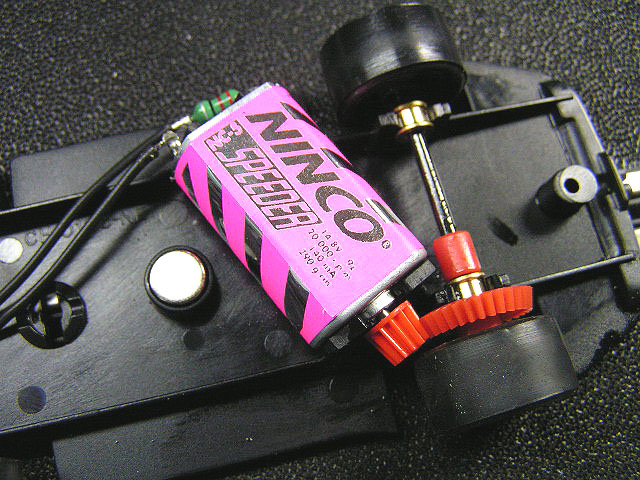
However if your model is still on the loud side, check the pinion to spur gear distance. The rear axle of this model has a red plastic shim that sets the gear mesh and side to side free-play. Sometimes there is excess free-play and you have to move this shim to get things just right. Doing so is not the easiest task accomplished as this shim is a very tight fit. I found using two needle nose pliers works nicely. Simply use one to grip the axle, and the other to add pressure to the face of the shim. It will take some elbow grease, but I have successfully done this countless times so you should have no issues.
There are other items you can check to make sure everything is right where it should be. If you still hear excess noise first check and see if the motor is rocking in the chassis. With the body off, place the car on the track and while lifting the rear of the chassis, apply full throttle. If you see the motor moving, add a light bead of adhesive on each side of the motor. I like to use high temp hot glue for this application as it holds up to the heat of the motor, yet is easily removed if you need to do a motor swap.
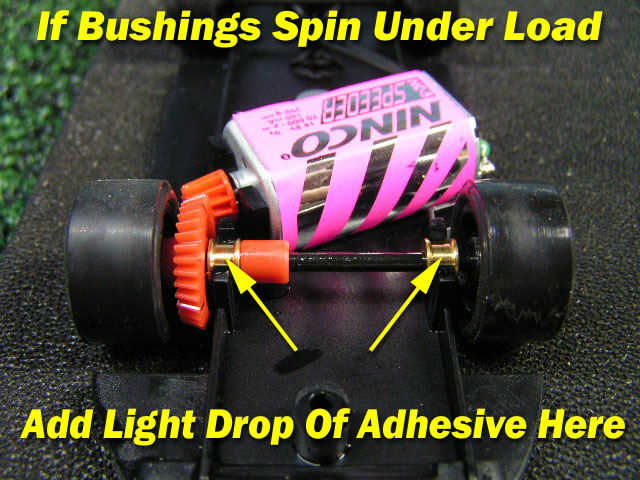
While you are performing this check, also look at the rear axle bushings. Inspect them while under full throttle to see if they are spinning in the chassis. If so, add a light drop of adhesive on each one. Again, I use high temp hot glue for this but you can use your favorite adhesive. Just remember that using some strong adhesives will make things challenging if you ever want to remove the axle.
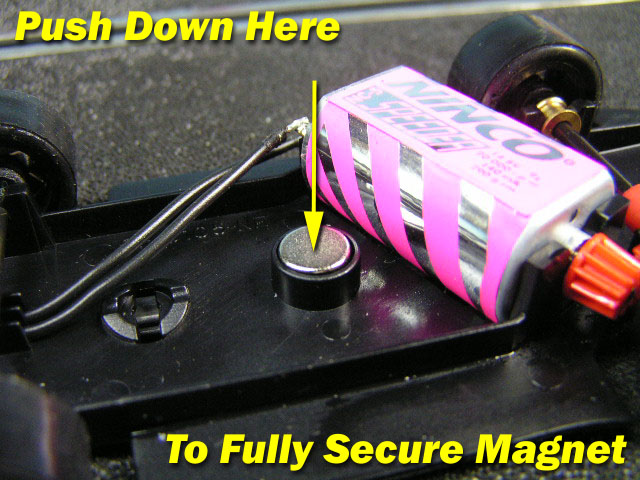
Another item that you might check is your magnet. It is very rare, but sometimes this magnet is not fully seated in the chassis. This does not really cause much, if any excess noise, but it can hurt the performance of the car if you run with magnets. If it is not fully seated, the magnetic traction will not be as strong since the magnet is farther away from the rails. All you need to is press firmly on the top of the magnet and it will usually seat perfectly. If it tries to come back out, simply repeat and apply adhesive along the top.
Rolling Along
One of the most important things to check are the wheels and tires. Like most all slot cars in our hobby, sometimes there is excess flash molding on the inside rib of the wheel. This flash molding prevents the tire from seating on the wheel properly. If not remedied, you might have a model that seems will never smooth out and have an annoying hop to it. Simply remove the tire and sand the inner rib until it is smooth and free of any flash.

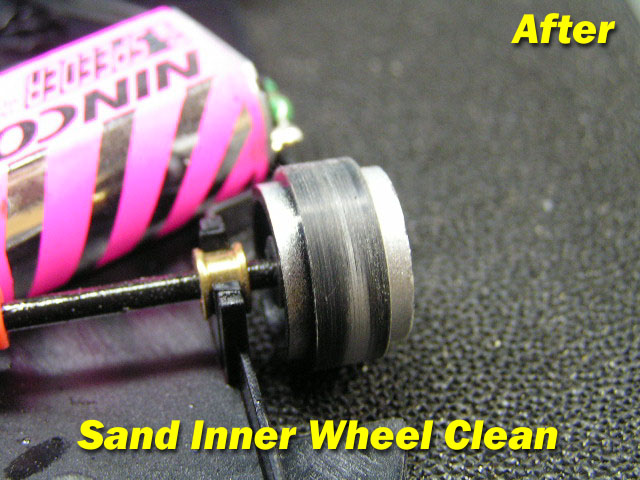
Once sanded, you can install the tire and give it a quick sanding as well. Take the tires and roll them across some masking tape. This will clean off any tire residue that will cause a bounce effect. Once you have completed this you just might find a much smoother and quieter car. You will also notice how the grip has improved overall. Keeping your tires clean and true goes a long way in our hobby.
On The Lumber
On our routed wood track the model is fairly smooth but has a tendency to chatter when you accelerate hard out of the turns. Profiling the tire edges helps this to some degree, but will not eliminate it entirely. Switching to Ortmann tires (Part# PMTR4558) from Professor Motor or IndyGrips makes the biggest change. This makes things much smoother and performance is very good. We averaged 3.4 seconds with this Porsche which is not bad for an angle-winder NINCO. I think I will stay with the Ortmann tires though, I like the control and grip on our flat latex surface a little better, plus they are sand-able.
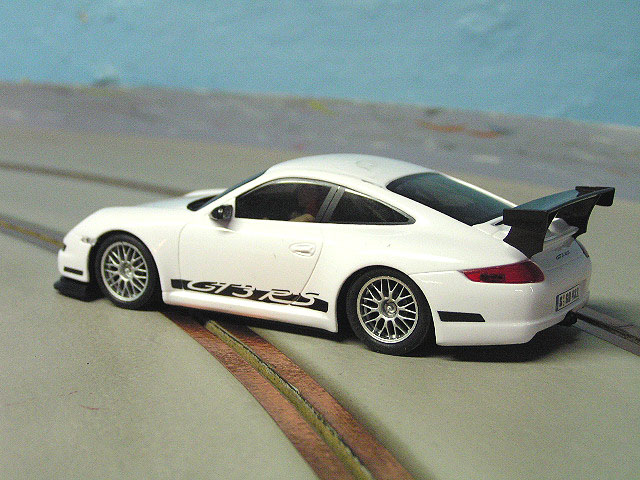
If you just have to have race numbers, there are plenty of options. Many decals out there will work just fine so just use some creativity. I used Monogram decals for this quick conversion.
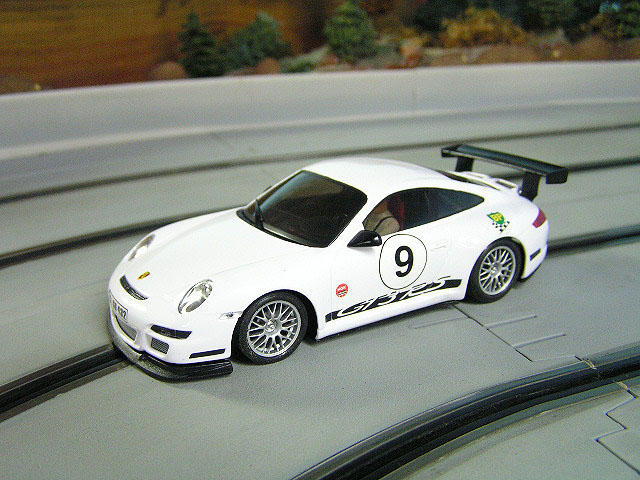
If you are a die hard Porsche fan, then this car will certainly make your hit list. A race livery is also available and more to come in the future. It makes a good addition to run with the Super GT line of models as well which just makes it more appealing. Take a closer look at what it has to offer, as you might be as surprised as I was when you hit the track.
- Harry
As always feel free to contact me about this article or just the hobby in general at harry@homeracingworld.com, or better yet drop into our Message Forum and share your thoughts with other enthusiasts!
Thanks Go To MRC For Providing Us With This Sample!